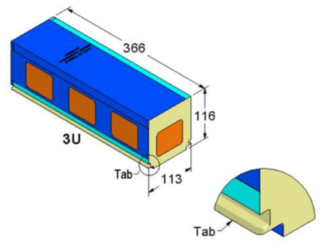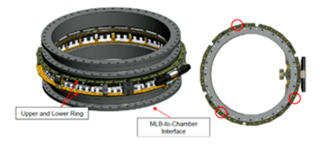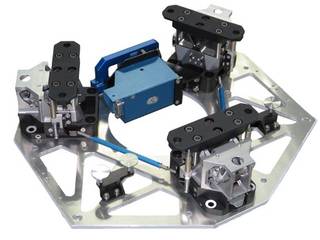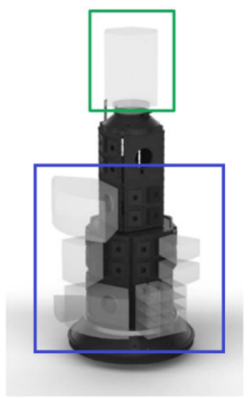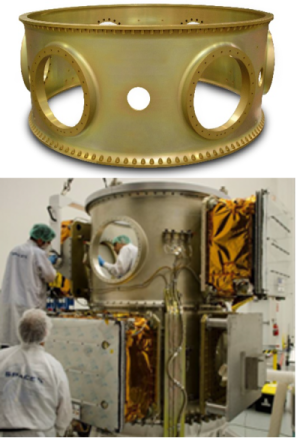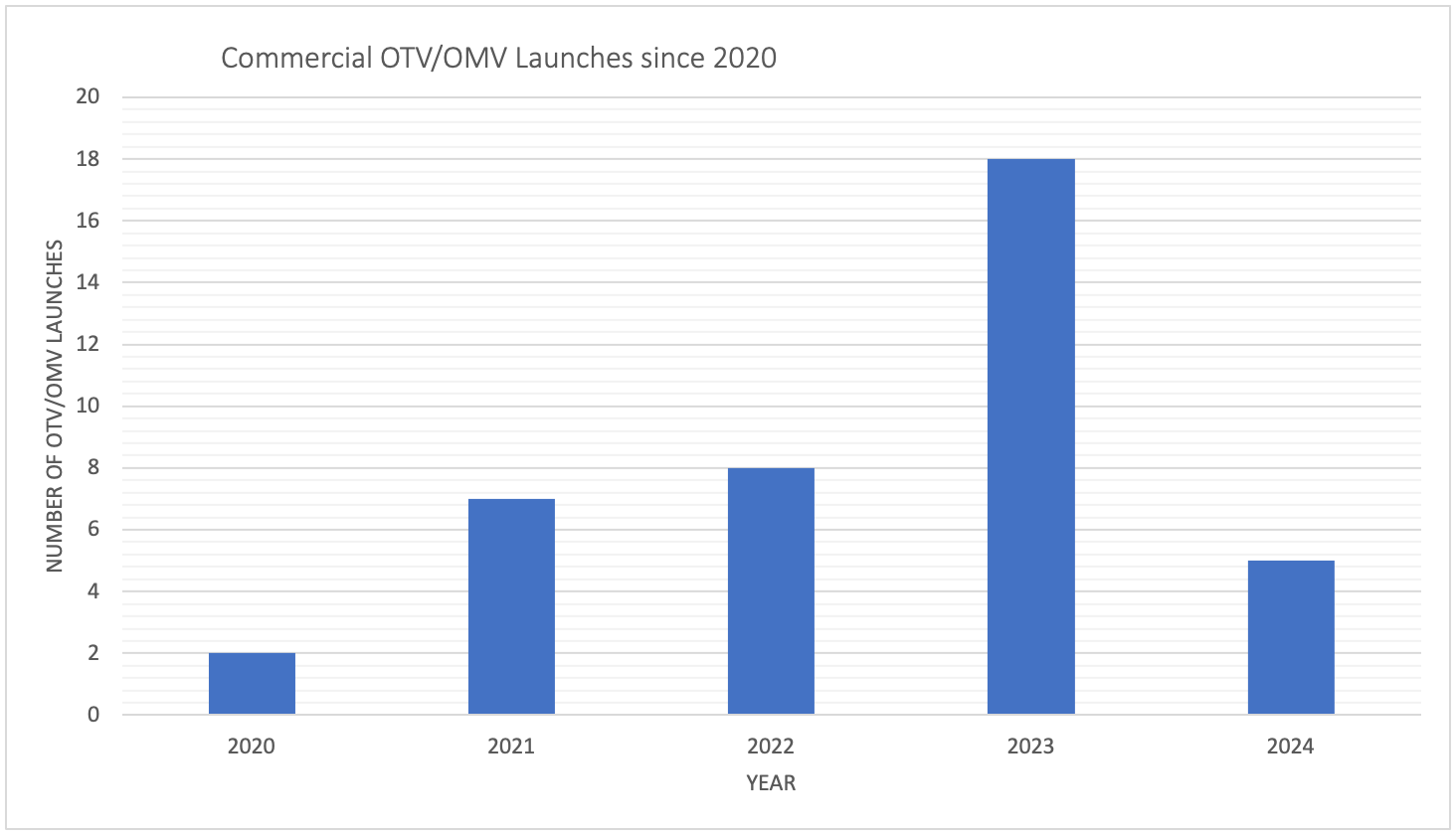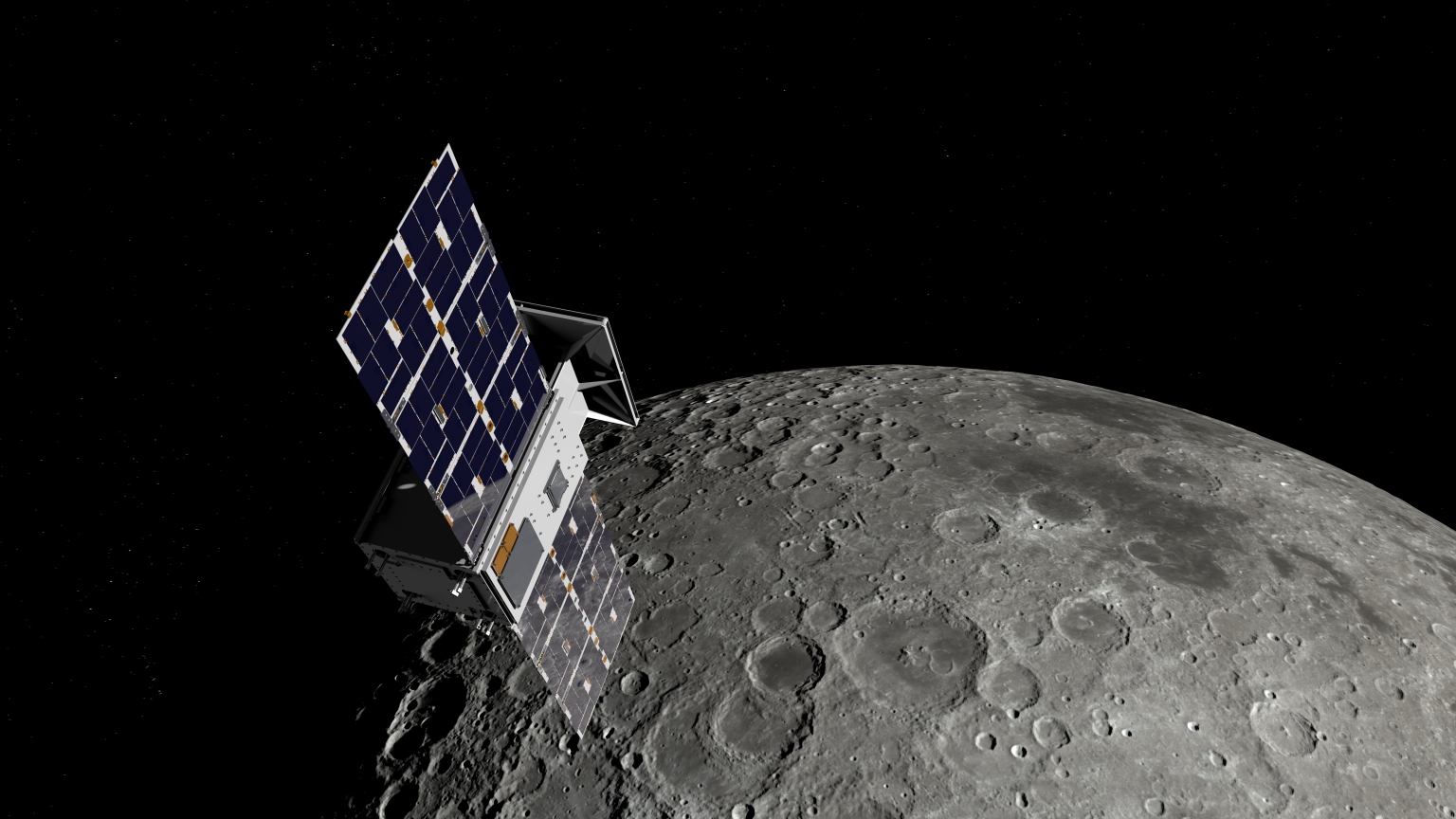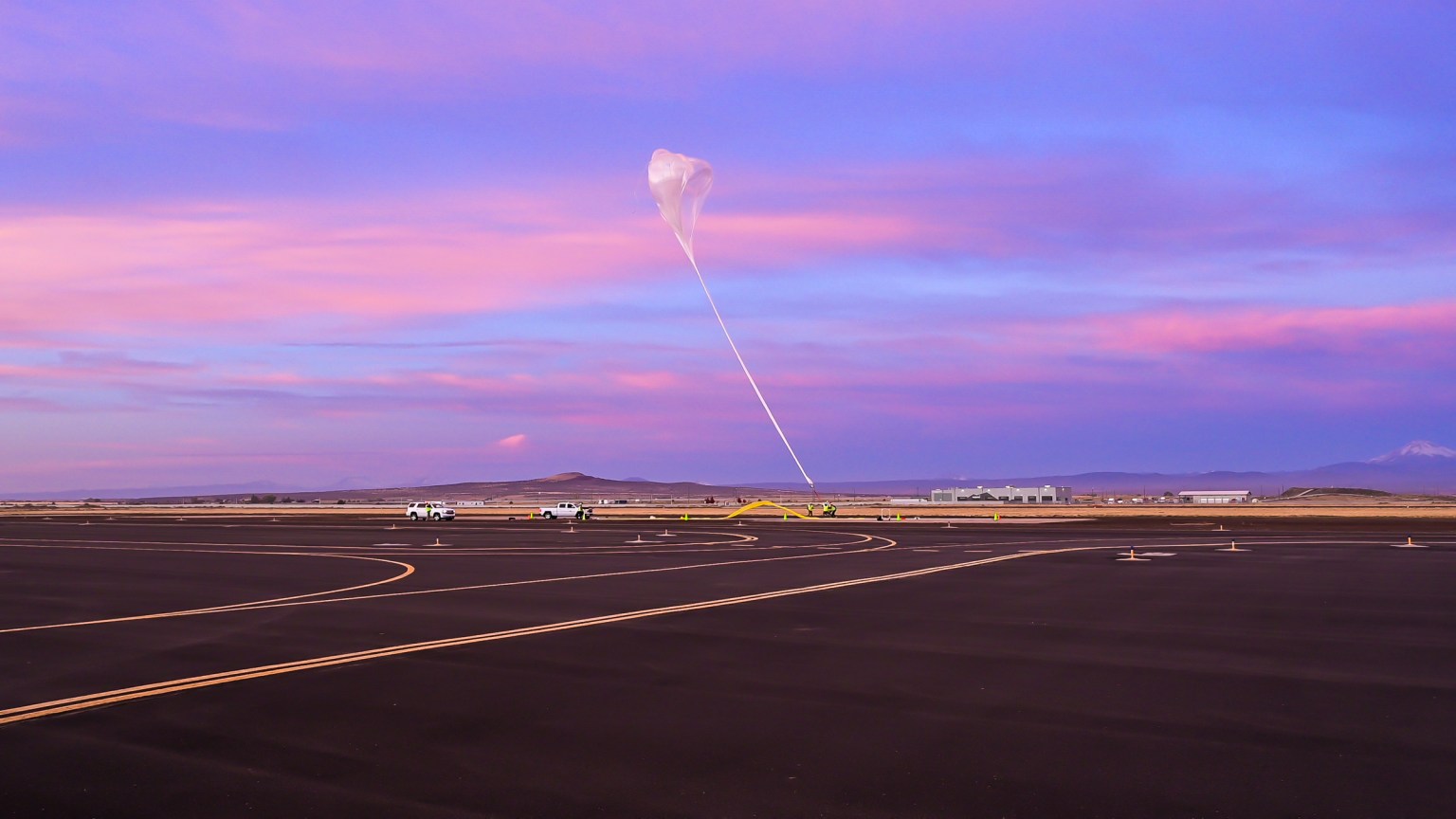Chapter Contents
- Chapter Glossary
- 10.1 Introduction
- 10.2 State-of-the-Art – Launch Integration Role
- 10.3 Launch Paradigms
- 10.4 Deployment Methods
- 10.5 Orbital Transfer / Maneuvering Vehicles (OTV/OMV)
- 10.6 International Space Station Options
- 10.7 On the Horizon
- 10.8 Summary
- References
Chapter Glossary
| (CBOD) | Clamp Band Opening Device |
| (CDS) | CubeSat Design Specification |
| (CSLI) | CubeSat Launch Initiative |
| (CSOs) | Client Space Objects |
| (DPAF) | Dual Payload Attach Fittings |
| (EAGLE) | ESPA Augmented Geostationary Laboratory Experiment |
| (EELV) | Evolved Expendable Launch Vehicle |
| (ENRCSD) | Nanoracks External CubeSat Deployer |
| (ESA) | European Space Agency |
| (ESPA) | EELV Secondary Payload Adapter |
| (GEO) | Geostationary Equatorial Orbit |
| (HEO) | Highly Elliptical Orbit |
| (ISS) | International Space Station |
| (J-SSOD) | JEM Small Satellite Orbital Deployer |
| (JAXA) | Japan Aerospace Exploration Agency |
| (JEM) | Japanese Experimental Module |
| (JEMRMS) | Japanese Experimental Module Remote Manipulator System |
| (LEO) | Low-Earth Orbit |
| (LTAN) | Local Time at Ascending Node |
| (M-OMV) | Minotaur Orbital Maneuvering Vehicle |
| (MEO) | Medium Earth Orbit |
| (MET) | Microwave Electrothermal Thrusters |
| (MLB) | Motorized Light Bands |
| (MPAF) | Multi Payload Attach Fittings |
| (MPEP) | Multi-Purpose Experiment Platform |
| (NICL) | Nanoracks Interchangeable CubeSat Launcher |
| (NOAA) | National Oceanic and Atmospheric Administration |
| (NRCSD) | Nanoracks ISS CubeSat Deployer |
| (OMV) | Orbital Maneuvering Vehicle |
| (OTVs) | Orbital Transport Vehicles |
| (PCBM) | Cygnus Passive Common Berthing Mechanism |
| (RUG) | Rideshare User Guide |
| (SL-OMV) | Small Launch Orbital Maneuvering Vehicle |
| (SSMS) | Small Spacecraft Mission Service |
| (SSOD) | Small Satellite Orbital Deployer |
| (TRL) | Technology Readiness Level |
10.1 Introduction
Of the 2,938 total spacecraft launched in 2023, 68% had a mass less than 600 kg and 27% were under 200 kg mass. This represents a 17% increase in total spacecraft launches since 2022 and is partially due to the emergence of next-generation SmallSat constellations. Small spacecraft weighing 400-600 kg, including Iridium Next and Starlink v2-mini, have gained popularity in the aerospace community for their overall price reduction and increased capabilities. While fewer traditional small spacecraft (mass below 200 kg) have been launched, they have consisted of roughly 40% of the total launched spacecraft in the past ten years (1). The recent expansion in SmallSat and CubeSat constellations by operators like SpaceX, OneWeb, and Planet have increased the overall presence of spacecraft in low-Earth orbit (LEO). With more SmallSat missions currently being planned, the demand for SmallSat launches is expected to rise exponentially (1).
To address the growing demand for SmallSat launches, the ‘rideshare’ launch market has emerged as a popular means for SmallSats to access space. This trend has been fueled by an increase in launch providers and improved launch capabilities, as well as the development of adapters and dispensers specifically designed for SmallSat and CubeSat missions. Rideshare launches are typically multi-manifest launches that either consist of: 1) a large primary spacecraft that determines all the mission requirements (e.g., orbit, schedule, concept of operations, etc.), where secondary payloads are manifested to take advantage of the launch vehicle’s surplus mass, volume, and other performance margins, or 2) a single launch vehicle consisting entirely of SmallSats, also known as a ‘dedicated rideshare’. It should be noted that the term ‘payload(s)’ in this chapter refers to the entire free-flying spacecraft deployed from a launch vehicle and is defined differently in chapter 2 Complete Spacecraft Platforms as instruments/technologies on spacecraft.
Additionally, nanosatellite form factors are increasing in dimensions and mass, requiring larger dispensers to accommodate these larger CubeSat sizes. Orbital transport vehicles (OTVs), along with generally more capable orbital maneuvering vehicles (OMVs) can offer “last mile” delivery services to intended orbits for small satellites. These vehicles are becoming a more common paradigm for SmallSat and CubeSat deployment and operational logistics. While historically referred to as “Space Tugs,” this term is in the process of being phased out by many in the commercial industry. The terms OTV and OMV seem to also be falling out of favor, with many commercial offerings simply referring to the available systems as vehicles capable of in-space transportation services. For the purpose of this report, the terms OTV/OMV describe systems with on-board propulsion that can be launched to an approximate orbit and then propel themselves to one or more target orbits. There they can either deploy the small spacecraft or serve as an integral part of the hosted payload. This chapter focuses on the use of the vehicles as deployers, while more information about hosted payload services is found in chapter 2 Complete Spacecraft Platforms, section 2.2.1. Some OTVs/OMVs are based on a traditional rocket kick stage and are intended to work with specific launch vehicles. Several commercial companies have successfully flown OTVs/OMVs and are booking future launch manifests.
Expanding future capabilities of small satellites will demand dedicated launchers. Flying a spacecraft as a dedicated payload may be the best method of ascent for missions that need a very specific orbit, near complete capability of available launcher performance, interplanetary trajectories, precisely timed rendezvous, or special environmental considerations. Technology developers and hard sciences can take advantage of the quick iteration time and low capital cost of small spacecraft to yield new and exciting advances in space capabilities and scientific understanding. The emergence of very small launch vehicles has altered the landscape by providing dedicated rides for small spacecraft to specific destinations on more flexible timelines.
NASA’s Launch Services program developed a new Indefinite Delivery/Indefinite Quantity (IDIQ) mechanism in Q1 2022: the Venture Class Acquisition of Dedicated and Rideshare (VADR) launch services. The VADR IDIQ contract mechanism was created to accommodate a more risk tolerant approach for NASA’s new class of launches using selected commercial providers. VADR-procured launch services enable unique launch capabilities for Class D or higher risk tolerant payloads and provide FAA licensed launch services capable of delivering payloads to a variety of orbits. This contract mechanism offers a broad range of commercial launch services for traditional and dedicated rideshare options. The commercial approach uses a lower level of mission assurance for payloads with higher risk tolerance and contributes to NASA’s science and research development efforts as an ideal platform for technical development. The 2022 Heliophysics Small Explorers Announcement of Opportunity and Mission of Opportunity were the first NASA AO’s to use this contract structure. The VADR IDIQ contract provides a new mechanism for traditional and dedicated rideshare launches for risk-tolerant payloads. While 13 companies were initially selected, an on-ramp provision allows new launch services and capabilities to be proposed (2).
For educational small spacecraft, several initiatives have helped provide these opportunities. NASA’s CubeSat launch initiative (CSLI) for example, has provided rides to a significant number of schools, non-profit organizations, and NASA centers. As of September 2024, the initiative launched 165 successful CubeSat missions, and continues to select CubeSats for launch (10). The European Space Agency (ESA) “Fly Your Satellite” program is a similar program which provides launch opportunities to university CubeSat teams from ESA Member States, Canada, and Slovenia (11).
The list of organizations/companies in this chapter is not all-encompassing and does not constitute an endorsement from NASA. There is no intention of mentioning certain companies and omitting others based on their technologies or relationship with NASA. The information is for awareness and guidance only. The performance advertised may differ from actual performance since the information has not been independently verified by NASA subject matter experts and relies on information provided directly from the manufacturers or available public information. It should be noted that TRL designations may vary with changes specific to the payload, mission requirements, reliability considerations, and/or the environment in which performance was demonstrated. Readers are highly encouraged to reach out to companies for further information regarding the performance and TRL of the described technology.
.
10.2 State-of-the-Art – Launch Integration Role
Launch options for SmallSats include dedicated launches or rideshare launches. Regardless of the approach, integration with the launch vehicle is a complex and critical portion of the mission. The launch integration effort for a primary spacecraft typically includes the launch service provider, the spacecraft manufacturer, the spacecraft customer, the launch range, and sometimes a launch broker or integrator (3). When launching on a rideshare launch, the launch integration may become complex due to its multi-customer, multi-mission nature.
There are several options for identifying and booking a launch for a SmallSat. For rideshares, the spacecraft customer may choose to use a launch broker or launch integrator to facilitate the launch manifest or work directly with the launch service provider. A launch broker matches a spacecraft mission with a launch opportunity, whereas an integrator provides additional services related to multi-mission manifesting and/or integration.
Whether a spacecraft customer chooses to use a launch integrator or not, it is the responsibility of the spacecraft owner/operator to obtain the appropriate licensing for their spacecraft. These licenses may include: radio frequency licensing, remote sensing licensing, and laser usage approval (4)(5). The launch integrator or the launch service provider will require proof of licensure before integrating and/or launching the satellite. They will also require additional safety-related analyses and supporting data/documentation prior to launch, which typically includes orbital debris information, materials and venting data, and spacecraft specific models (6).
For rideshare launches, many satellites are subject to a “do no harm” approach to protect the other spacecraft on the launch vehicle. A list of “do no harm” requirements are imposed on the rideshare satellites by the launch provider, launch integrator, or primary mission owner. These requirements vary by launch provider and launch integrator, but usually include restrictions on transmitters, post separation mechanical deployments, and hazardous materials. A comprehensive list of typical “do no harm” requirements is provided in the NASA Rideshare User Guide (RUG) (7).
10.2.1 Launch Brokers and Services Providers
A launch broker for small satellites is an individual or organization which matches a spacecraft with a launch opportunity, usually as a rideshare spacecraft. Typically, a launch broker does not provide any additional launch integration services beyond coordinating the relationship between the spacecraft manufacturer or customer and the launch service provider. Their purpose is to fill excess capacity on a launch, and they can also bolster negotiations between the launch provider and payload for scheduling, integration, safety testing, and cost (8).
Launch integrators work with the satellite customer and the launch vehicle provider to ensure that the customer’s spacecraft is compatible with the launch vehicle by performing analyses and physical integration services. The launch integrator may provide the CubeSat dispenser, separation system, or other hardware required for integration, or these may be provided by the spacecraft customer.
10.3 Launch Paradigms
The SmallSat market has grown considerably over the past decade experiencing a 23% compound annual growth rate from 2009 to 2018 (9), and this growth continues unabated. From 2013 to 2017 there was an average of ~140 SmallSats (less than 200 kg) launched per year. From 2017 to 2021 this number increased to an average 332 SmallSats per year, with more than 550 SmallSats launched in 2022 thanks to Starlink, Plan (1). Of the total spacecraft launched in 2023, 200-600 kg type spacecraft accounted for 40%, while micro, nano, pico, and femto spacecraft were the next most launched spacecraft (1). The 200-600 kg class spacecraft has seen a considerable launch growth since 2020, primarily due to mega constellation Starlink by SpaceX.
This increase in small satellite demand has caused a shift in the launch vehicle market, with many companies creating or advertising launch platforms centered around small satellites. While other chapters in this report cite specific companies providing “state-of-the-art” technologies, this section will provide an overview of two types of launch methods for SmallSats and the current state of these markets: dedicated and rideshare.
10.3.1 Dedicated Launches
In the context of this report, dedicated launches for SmallSats are those generally used to launch satellites with a mass less than 180 kg. However, this does not mean that the maximum mass to orbit is 180 kg or less, as some dedicated launchers have a payload maximum of 1000 kg, and many launch vehicles marketed for SmallSats can deliver masses to orbit that are higher than 180 kg. The primary orbit for this type of launch is low-Earth orbit (LEO), with very few companies currently targeting highly elliptical orbit (HEO), medium-Earth orbit (MEO), or geostationary equatorial orbit (GEO).
Dedicated launches for SmallSats have many advantages. A SmallSat on a dedicated launch controls the mission requirements in whole — what they need, when they want to launch, and where they want to go. They generally have a readiness “go/no-go” call on launch day in case something goes wrong with their satellite pre-launch. They can also request special launch accommodations, such as a nitrogen purge or late battery charge, that are generally not available to a rideshare launch (this may be as a standard service or with an additional cost as mission-unique). The downside to a dedicated launch is that they are generally more expensive than a rideshare launch.
10.3.2 Traditional Rideshare Launches
Until recently, there were only a few launchers that allowed small spacecraft to ride as primary spacecraft. The majority of small spacecraft are launched as rideshares. Rideshare arrangements provide more launch options with demonstrated launch vehicles. Since almost any large launcher can fit a small payload within its excess mass and volume margins, there is no shortage of options for spacecraft that want to fly as a secondary spacecraft. On the other hand, there are downsides of ridesharing. For rideshares as a secondary payload to a larger primary spacecraft, the launch date and trajectory are determined by the primary customer, and the secondary payloads must take what is available. In some cases, they need to be delivered to the launch provider and be integrated on the adapter months before those spacecraft that are manifested in dedicated rideshares. Generally, the secondary spacecraft riding along with a larger primary spacecraft are only allowed to be deployed once the primary spacecraft successfully separates from the launch vehicle, but there are instances where the rideshare spacecraft separate prior to the primary spacecraft (12). Dedicated rideshare launches are those that deploy multiple small spacecraft into orbit using a single launch. The orbits in which the spacecraft are deployed are similar but may vary in altitude. These types of launches are growing in popularity with many launch vehicle providers offering regular dedicated rideshare launches to the same altitude at regular intervals throughout the calendar year. While challenging, the logistics of these missions are managed by various launch integrators throughout the market, many of which are new to industry but are forging a new path in ridesharing.
10.4 Deployment Methods
The method by which SmallSats are deployed into orbit is a critical part of the launch process. The choice of deployment method depends on the form factor of the satellite. This section will discuss the deployment of CubeSats, which generally use CubeSat dispensers, and the deployment of free-flying SmallSats.
10.4.1 CubeSat Dispensers
The CubeSat form factor is a very common standard for spacecraft up to approximately 24 kg (12U CubeSat) but can also be extended to approximately 54 kg in a 27U configuration (13). The most updated CubeSat Design Specification document is found at http://www.cubesat.org, a website maintained and operated by California Polytechnical State University, San Luis Obispo, the creators of the CubeSat form factor.
The CubeSat form lends itself to container-based integration systems, or dispensers, which serve as an interface between the CubeSat and the launch vehicle. It’s a rectangular box with a hinged door and spring mechanism. Once the door is commanded to open, the spring deploys the CubeSat. Many companies currently manufacture dispensers for the CubeSat form factor which follow one of two constraint systems: the rail-type dispenser, and the tab-type dispenser. Due to the large number of dispenser manufacturers, the different companies are not listed here. Instead, a brief overview of the two types of dispensers is provided.
A rail-type dispenser (Figure 10.1) supports CubeSats that have rails which extend the length of the CubeSat on four parallel edges. The rails on the CubeSat prevent it from rotating inside the dispenser. After the dispenser door opens, the rails slide along guides inside the dispenser and the CubeSat is deployed. As such, it is important that any rail-based CubeSat follow the current development specifications to ensure compliance. This type of dispenser is the most widely manufactured configuration, with more than fifteen manufacturers worldwide. Some rail-type dispensers use a clamping mechanism to securely hold the CubeSats in place during launch.
A tab-type dispenser (Figure 10.2) supports CubeSats with tabs which run the length of the CubeSat on two parallel edges. Typically, the dispenser grips the tabs to hold the CubeSat in place, only releasing it after the door has been commanded to open. More developers are beginning to develop their own tab-based designs for CubeSat dispensers. Many are based on the original Planetary Systems Corporation standard, however some offer features such as built-in isolation to accommodate for the launch vehicle environment. In addition, there are some tab-based dispensers that do not grip the tabs. Rather, they provide a slot to accommodate the tab, which slides freely within the slot. While use of tab-type dispensers is growing, they remain a minority among dispensers purchased and used by developers.
While CubeSats can generally pick their dispenser type (rail vs. tab), the choice of the actual dispenser is not always a decision made by the CubeSat. In many cases, the launch vehicle provider or launch broker/integrator has already determined which dispensers will be installed on the launch vehicle. As each dispenser manufacturer has slightly different volumes and requirements, it is beneficial for the CubeSat to design for as wide a range of dispensers as possible to maximize launch opportunities.
Additionally, some dispenser manufacturers have features that may violate the “do no harm” requirements set forth by the launch vehicle or launch integrator. Therefore, it is beneficial for the CubeSat to evaluate “do no harm” recommendations from a variety of organizations, as these requirements can vary from flight to flight on the same launch vehicle based on the risk posture of the primary payload and/or the mission “owner” (7).
10.4.2 SmallSat Separation Systems
Small satellites which do not meet the CubeSat form factor, or will not be using a CubeSat dispenser for integration to the launch vehicle, require a different separation mechanism. Separation systems for SmallSats generally follow either a circular pattern or a multi-point (3 or 4 point) pattern. Depending on the launch vehicle or integrator, separation systems may already be in place and available to secondary spacecraft. It should be noted that separation systems are often some of the most complicated pieces of hardware involved with launching spacecraft. If a spacecraft is given the option to bring its own separation system to launch, great care should be taken in selection, including the development maturity and flight heritage for any separation system.
Circular separation systems use two rings held together by a clamping mechanism. One ring is attached to the launch vehicle and the other ring is attached to the spacecraft. Once the clamping mechanism is released, the two rings separate and are pushed apart by springs. Each ring then remains with the spacecraft or the launch vehicle. There are two primary types of clamping configurations, motorized light bands (MLB) and Marman clamps.
The MLB (Figure 10.3) is a motorized separation system ranging from 8 inches to 38 inches in diameter. Smaller MLB systems are used to deploy spacecraft less than 180 kg, while larger variations may be used to separate larger spacecraft or other hosted payload hardware (see section 2.2.1), which are discussed below. The MLB’s separation system eliminates the need for pyrotechnic separation, resulting in lower shock deployments with no post-separation debris.
Marman band separation systems use energy stored in a clamp band, often along with springs, to achieve separation. The Marman band is tensioned to hold the spacecraft in place. Some Marman bands use pyrotechnic devices to cut the clamping bolt, however many companies offer a low shock release mechanism which is potentially better for spacecraft sensitive to shock. Sierra Space produces a Marman band separation system known as Qwksep, which uses a series of separation springs to help deploy the spacecraft after clamp band release. RUAG Space provides several circular separation systems which use their Clamp Band Opening Device (CBOD) release mechanism to reduce shock impact on the spacecraft (14).
Several companies are now providing multi-point separation systems instead of the circular band. Using a multi-point separation system may result in mass savings over a circular separation system. However, some systems require additional simultaneous signals from the launch vehicle provider to ensure proper release. The RUAG PSM 3/8B is a low-shock separation nut developed to fit OneWeb satellites (15). It requires additional firing commands from the launch vehicle or a dedicated sequencing system. ISISPACE has also developed the M3S Micro Satellite Separation System (see Figure 10.4) which is designed for satellites up to 100 kg but can be configured for higher masses (16).
The Advanced Satellite Dispenser (ASD) by Rocket Lab is a deployment mechanism for small payloads that complies with the Planetary Systems Corp Rocket Lab (PSC-RL) document. The walls and door are optional meaning the ASD can fly with or without canisterization. This flexibility allows the freedom to significantly increase the payload’s volume if they can use tab rails.
Given the stiffness and fundamental frequency requirements of traditional rideshare missions, many companies are also shifting to 4-point separation systems for MicroSats and SmallSats as a viable alternative to traditional MLB or clamp band systems. These systems function in a similar way to the systems above and are typically rated for microsatellites (≤100 kg), however boast less complexity than a traditional MLB or Clampband. The rapid acceptance of this launch solution is driven by the fundamental frequency requirements of traditional rideshare launches, with the hope that reduced stiffness at the interface will increase the compatibility of SmallSats and MicroSats for those types of launches. In addition to reduced complexity, many of these result in cost savings as well, which can be passed on to both the integrator and the SmallSat manufacturer. Many integrators are exploring the addition of such systems into their portfolio to accommodate launches in the near future.
Cake Topper and Plate System for Rideshares
SpaceX has developed a system that differs from the SPA system for rideshare missions to SSO (Transporter Missions) and mid-inclination orbits (Bandwagon Missions). This system of plates rather than a ring is intended to allow more payloads to be included in the circumferential space for flight on their commercial rideshare missions. In addition, for larger spacecraft or spacecraft that cannot be horizontally mounted during flight, they also offer a cake topper option. Figure 10.5 shows these two options. The blue box shows the plate option which has a specific set of rideshare loads for the missions’ part of transporter or bandwagon. The green box denotes the cake topper option which also has separate environments. User guides for both configurations are available on the launch provider’s website. For missions that will fly under the VADR contract, please contact NASA’s Launch Services Program (LSP) for additional guidance and enveloping environments.
10.4.3 Integration Hardware
A main driver for CubeSat utility is their adhesion to a standard that can be integrated into several different launch configurations. The physical hardware that attaches both a containerized and non-containerized small spacecraft and keeps it insulated from a rocket body include deployers, adapters, dispensers, and launchers. The purpose of this hardware is to eject the spacecraft safely into orbit, and most services offer different features, interfaces, connections, and designs for small spacecraft specifications. The exact configuration and standards vary by launch vehicle, and the determination of an appropriate and reliable launch option is part of the launch qualification process (8). With this rise in CubeSat constellations, integration hardware capable of launching multiple SmallSats simultaneously and consecutively is now a standard. This section will highlight some existing examples of integration flight support hardware applicable to both SmallSats and CubeSats, but the reader is highly encouraged to identify other integration services.
Evolved Expendable Launch Vehicle (EELV) Secondary Payload Adapter (ESPA)
The ESPA ring (Figure 10.6, top) is a multi-payload adapter for large primary spacecraft originally developed by Moog Space and Defense Group. Six 38 cm (15”) circular ports can support six auxiliary payloads up to 257 kg each. It was used for the first time on the Atlas V STP-1 mission in 2007. The ESPA Grande (Figure 10.6, lower) uses four 61 cm (24”) circular ports which can carry spacecraft up to 450 kg (991 lb) (17). Although developed by Moog, several other companies now offer similar designs in different configurations.
Small Spacecraft Mission Service (SSMS) Dispenser
ESA has developed the Small Spacecraft Mission Service dispenser for the Vega launch vehicle (Figure 10.7). This dispenser comes in a variety of different modular parts which can be configured based on the satellite launch manifest. The modularity of the dispenser provides greater flexibility for accommodating different customers (18).
Dual / Multi Payload Attach Fittings (DPAF / MPAF)
Many launch vehicle providers have existing accommodations for two or more payloads which are sometimes referred to as Dual Payload Attach Fittings (DPAF) or Multi Payload Attach Fittings (MPAF). As these are generally launch vehicle specific, and occasionally mission specific, they are not discussed here.
10.5 Orbital Transfer / Maneuvering Vehicles (OTV/OMV)
One of the main disadvantages of riding as a rideshare is the inability to launch into the desired orbit. For rideshares with a primary spacecraft, the primary mission determines the orbital destination, so the secondary spacecraft orbit usually does not perfectly match their specific needs. However, by using an OTV or OMV, secondary spacecraft can maneuver much closer to their desired orbits. OTVs are generally more coarsely propulsion-capable, while OMVs may offer hosted systems more in terms of power, pointing, and communications. The OTV / OMV market is nascent, with many planned systems but few with existing flight heritage. This emerging technology is an area of interest in the near term for both SmallSats and CubeSats, as it offers a significant capability to reach destinations not previously achievable with systems of this scale. The ability for small spacecraft to reach new orbits could enable a much wider range of mission designs for destinations both near and far.
This section primarily focuses on systems that offer delivery or deployment satellite services, while systems that primarily offer instrument/technology payload hosting can be found in Chapter 2 Complete Spacecraft Platforms. The distinction between OTV / OMVs and hosted payload providers are not always clear, with many OTV / OMVs offering both the deployment of free-flying spacecraft at secondary orbits from the vehicle, and the hosting of instruments/technologies that stay attached to the vehicle. Similar OTV / OMV systems can be used to service other spacecraft, including deorbiting or relocation to a graveyard orbit. For information regarding those capabilities, refer to Chapter 13 Deorbit Systems.
While commercial delivery and deployment system launches have increased in cadence since the early 2020s, their launches have slowed a bit in 2024. Below is a launch timeline of OTV/OMVs with commercial payload services as part of the vehicle’s documented purpose. This cadence is expected to continue an upward trend as more vehicles become space qualified and as new companies emerge. The data is derived from publicly accessible data and only contains launches by the providers described in this report. There may be more launches than indicated herein, and the success of the launch/mission is not factored.
10.5.1 Commercial Development/Services
As discussed above, the ESPA ring provides structure to which SmallSats or CubeSat dispensers are mounted. The idea of adding propulsion to an ESPA ring led to many of the early commercial OMV/OTV vehicle designs. Systems that were originally derived from the ESPA ring include the Spaceflight Inc. (now Firefly) SHERPA (19), the Orbital Sciences Corporation (now Northrup Grumman Space Systems) ESPAStar Product Line (20), and the Moog METEOR (21). The ESPAStar product line has gone through multiple programs with multiple names. The ESPAStar line has significant flight heritage from the Long Duration Propulsive ESPA (LDPE) satellites, now known as Rapid On-Orbit Space Technology Evaluation Ring (ROOSTER) United States Space Force (USSF) program. While the SHERPA system is no longer commercially available, FireFly is now offering rides on its Elytra OTV/OMV product line, which appears to build upon the ESPA ring heritage for specific compatibility with FireFly’s small- and medium-lift launch vehicles. Rocket Lab is another launch provider offering an OMV/OTV platform. The Photon system is an evolution of the Electron launch vehicle Kick Stage (22).
Other systems are being developed from the ground-up by commercial entities to provide orbital transport, hosting, and deployment services. These include the Momentus Vigoride vehicles, the Epic Aerospace Chimera vehicles, the Exolaunch Reliant, the Moog SL-OMV, the TransAstra WorkerBee, the Atomos Quark, the Impulse Space Mira and Helios vehicles, and the D-Orbit ION vehicles. Northrup Grumman, in addition to its ESPAStar series, has a proven Mission Extension Vehicle (MEV) that can host payloads, but is primarily developed to dock and extend the life of large GEO satellites. To date, the MEV has successfully extended the life of two IntelSat systems.
The current state-of-the-art OTV vehicle offerings tend to advertise 1000’s of km/s of delta-V, which enables the following services:
- Altitude change / planetary transfer – changing the altitude from where the vehicle was deployed by the launch vehicle. This could be an altitude raising or lowering operation, depending on the needs of the integrated payloads. In some cases, if escape velocity is reached, this maneuver can be used to transfer to lunar orbits or beyond. A payload delivery and deployment vehicle could perform multiple altitude raises and lowers during a single mission.
- Inclination change – changing the angle of the orbit with respect to the angle at which the vehicle was initially deployed by the launch vehicle. This can be done during the same burn as an altitude change to increase efficiency, or as a standalone operation. This operation dramatically changes what is viewable on the ground swath by the orbiting spacecraft. It can also dramatically change the solar incidence of the orbit.
- Phasing – this refers to changing the position of a spacecraft within a given orbit. Assuming the same orbit of two spacecraft, the phasing of each of them would dictate at what time each of them are over a specific ground swath. This is typically achieved with a “slow-down” burn to achieve a smaller orbital period, and then a “recircularization” burn to return the spacecraft to its original orbit.
- Constellation deployment – this is the ability for a single payload delivery vehicle to drop multiple spacecraft into a constellation formation. This dramatically reduces the propulsive need of the individual small spacecraft and can enable constellations of small spacecraft to achieve much more than they could if they needed the propulsion to deploy and phase themselves.
Many OTVs and OMVs are designed with a large excess propellant volume so that after the initial contracted services, the hosting vehicle can remain in orbit and be contracted for additional future services such as deorbiting via “pushing” another spacecraft, or contracted inspection services. Some providers are developing systems specifically for these in-space services, including Astroscale, Starfish Space, and Turion Space. Technology gaps to developing all these highly capable space vehicles include RF licensing challenges, ACDS component availability, reliable propulsion systems, and lack of standardization for payload interfacing.
The following sections contain an overview of commercial OTV/OMV vehicles and their development status, and Table 10-1 provides corresponding vehicle parameters.
Firefly Elytra
The Elytra vehicle line is a series of orbital vehicles offered by Firefly Aerospace. The smallest vehicle is the Elytra Dawn, optimized for intra-LEO mobility. The largest vehicle is the Elytra Dark, which offers payloads transportation to lunar orbit and beyond. The Elytra line builds off Firefly’s previous Space Utility Vehicle design and experience, as well as the Spaceflight SHERPA (Firefly acquired Spaceflight in 2023). The first Elytra mission is planned to fly aboard a Firefly Alpha rocket at the end of 2024 in support of a National Reconnaissance Office (NRO) mission.
Epic Aerospace
Epic Aerospace has a line of Chimera systems ranging from smaller LEO vehicles up to larger GEO-targeting vehicles. The LEO vehicles are intended to enable altitude changes from 450 km from the deployment location to larger, intensive and fast phasing maneuvers (3 hours of Local Time at Ascending Node (LTAN) change in less than 90 days is advertised (23)). The GEO systems are advertising capabilities beyond Earth, with trans-lunar injection from GTO/LEO as an option. The first LEO Chimera system was launched in January of 2023 aboard a SpaceX Transporter and is currently operational.
D-Orbit
The D-Orbit ION Satellite Carrier system was first used in 2020 to deploy Planet Labs constellation satellites and has been used 14 times as of August 2024 to deploy small satellites. Readers are encouraged to reach out to the company for more information.
Rocket Lab
The Kick-Stage-derived Photon system is a flight-proven vehicle that deploys payloads to target orbits not otherwise achievable by the Electron launch vehicle. In addition, the system can be mounted on an ESPA port of other launch vehicles as a secondary payload. Rocket Lab advertises other vehicles alongside Photon that can be used for hosted payload services and orbital insertion services: the Explorer, Lightning, and Pioneer.
The Photon system has been flown four times as of September 2024. The third Photon mission successfully delivered the NASA CAPSTONE spacecraft to a near-rectilinear halo orbit around the Moon via a trans-lunar injection maneuver. The system used for CAPSTONE is now referred to as the Rocket Lab Explorer. The Explorer platform is now being used as the basis for the spacecraft envisioned for the ESCAPADE mission to Mars.
Atomos
Atomos has plans to offer many in-space services to small spacecraft such as deployment and orbit changes (raising, phasing, and inclination), rendezvous, docking, and satellite life extension. The first version of their OTV/OMV, the Quark-LITE launched in spring 2024 and despite communication and tumbling issues, it successfully demonstrated the integrated hardware and software developments for high delta-V orbital transfer capability and life extension in GEO (24). Upcoming Atomos GEO-1 and -2 missions will use the Quark-Alpha with payload delivery and hosting services to GEO.
Momentus Vigoride
Momentus Space has developed and flown the Vigoride orbital service vehicle. The maximum payload mass on Vigoride is 800 kg to LEO, and can be launched from an ESPA Grande ring, SpaceX XL rideshare plate, or a dedicated launch vehicle. Vigoride uses microwave electrothermal thrusters (MET), water plasma engines, to change the orbit prior to releasing payloads at their final orbit (25). Like all OMV/OMTs, the Vigoride is capable of changing inclination, altitude, and orbital planes. The first flight for Vigoride occurred in May of 2022. While the inaugural flight had issues due to failed solar array deployment, two additional flights of the system occurred in 2023 and were both successful. The company has additional Vigoride systems ready for customer missions planned to fly in 2026.
UARX Space
UARX Space is developing the Orbit Solutions to Simplify Injection and Exploration (OSSIE) orbital transfer and hosted payload vehicle. This spacecraft is designed to be modular and scalable to satisfy customer requirements by using either electric or chemical propulsion. OSSIE has been developed together with other partners such as DLR to transport up to 400 kg. The vehicle uses green propellant thrusters made by Dawn Aerospace to maneuver. In September 2023, UARX space signed a cooperation agreement with Sener to manage the guidance, navigation, and control of the transfer missions. The first OSSIE qualification mission, scheduled to launch in June 2025, will hold 12 customers spanning from PocketQubes, CubeSats, and hosted payloads (28).
Impulse Space
The Mira Orbital Transfer Vehicle by Impulse Space provides several specific services such as orbital transport, constellation deployment, payload hosting, deorbiting maneuvers, and others. Mira’s first launch was November 2023 on the SpaceX Transporter-9 mission (LEO Express 1) and has since then met all mission objectives over the course of nine months (29). Mira is capable of 600 m/s delta-v for a 300 kg payload via eight (8x) Saiph (27N) bi-propellant thrusters and sixteen (16x) cold-gas thrusters, in four clusters of four, enabling 6DOF control. There are plans to launch a second LEO-Express mission late 2024 for further technology development and validation.
While the Mira vehicle was designed for payload hosting, deployment, and orbital adjustments, the Helios vehicle is a high-powered kick stage advertised to provide transportation services out to Cislunar environments. Helios uses a combination of liquid oxygen and liquid methane to transport more than 4,000 kg of payload from LEO to GEO in less than 24 hours. The first flight is planned for no earlier than 2026 (29).
Space Machines Company
The Optimus vehicle is developed to carry hosted payloads and perform close inspections of Client Space Objects (CSOs) in LEO. The vehicle was first flown in 2024 with 8 hosted payloads from international customers and was powered by a bi-propellant chemical propulsion system (31). Optimus will be updated before next planned launches in 2026 and 2027 to LEO mid-inclination and SSO orbits. The updated ‘Block-2’ platform will be a maneuverable, rapid-response vehicle carrying improved sensors for detailed inspection images to be taken of satellites from 10km. Updates also include an RCS system that will allow for close approach maneuvers to within 1km of a CSO.
Blue Origin
The Blue Ring space mobility vehicle by Blue Origin is advertised to provide in-space computing capability, hosting services, and delivery services for more than 3000 kg of commercial and government payloads. Blue Ring aims to support missions in medium Earth orbit out to the cislunar region as a host spacecraft platform. It uses a combination of chemical and solar electric propulsion with rollout solar arrays. Blue Origin plans to test Blue Ring’s mission operation capabilities and core flight systems in space for the first time on their New Glenn rocket in 2025 (32). The New Glenn rocket completed its first second-stage hot fire test in September 2024 and is on track for its first mission, DarkSky-1 (33).
| Table 10-1: Commercial Orbital Transfer / Maneuvering Vehicles | ||||||
|---|---|---|---|---|---|---|
| Company Headquarters | Vehicle | Heritage | Operational Altitudes | Maximum Payload Capacity (kg) | Delta-V | Ref. |
| Atomos Space USA | Quark | Flown | LEO | 400 | – | (40) |
| Blue Origin USA | Blue Ring | Upcoming | Not disclosed | – | – | (32) |
| D-Orbit Italy | ION | Flown Successfully | Not disclosed | – | – | (38) |
| Epic Aerospace Argentina | Chimera LEO Block 0 | Flown Successfully | +/- 450 km from LEO deployment | 300 | 200 m/s at max payload | (23) |
| Chimera LEO Block 1 | Upcoming | +/- 450 km from LEO deployment | 300 | 950 m/s at max payload | (23) | |
| Chimera GEO Block 0 | Upcoming | GTO to TLI | 300 | 1800 m/s at max payload | (23) | |
| Chimera GEO Block 0 / Bus | Upcoming | GTO to TLI | 290 | 1800 m/s at max payload | (23) | |
| Exolaunch Germany | Reliant Standard | Upcoming | +/- 275 km from LEO(?) deployment | 200 | – | (39) |
| Reliant Pro | Upcoming | +/- 275 km from LEO(?) deployment | 260 | – | (39) | |
| Exotrail France | Spacevan LEO | Flown Successfully | LEO (~400-2000 km) | ~200 | ~500 m/s | (46) |
| Spacevan GEO | Upcoming | Above LEO (e.g., MEO, GEO, Cislunar >2000 km) | ~150 | ~2200 m/s | (47) | |
| Firefly USA | Elytra Dawn | Upcoming | LEO | – | – | (41) |
| Elytra Dusk | Upcoming | LEO to GEO | – | – | (41) | |
| Elytra Dark | Upcoming | LEO to Lunar/Planetary | – | – | (41) | |
| Impulse Space USA | Mira | Flown Successfully | LEO | 300 | 500 m/s at max payload | (29) |
| Helios | Upcoming | GEO | – | – | (30) | |
| Moog USA | SL-OMV | Upcoming | 400 – 700 km | 6 x 12 (+ additional, if containerized) | Up to 200 m/s | (31) |
| METEORITE | Upcoming | 500 – 1200 km | 100 (or more, with caveats) | >175 m/s | (35) | |
| METEOR | Upcoming | 500 – 1200 km | 750 | >400 m/s | (36) | |
| Momentus USA | Vigoride | Flown Successfully | 250 – 2000 km (GEO and LLO also available) | 800 | up to 2000 m/s | (37) |
| Rocket Lab USA | Photon | Flown Successfully | LEO, MEO, GEO, and beyond | – | – | (22) |
| Space Machines Company Australia | Optimus | Flown | 300 – 700 km | 50 | 500 m/s | (44)(45) |
| TransAstra USA | WorkerBee (multiple configurations) | Upcoming | LEO, MEO, GEO, HEO, Lunar/Planetary | 200 – 2000 | – | (42) |
| UARX Space Spain | OSSIE | Upcoming | 350 – 1000 km | 200 | 690 m/s | (26) |
| Quantum Space USA | RANGER | Upcoming | LEO, MEO, GEO, cislunar | 6000 | Up to 10 km/s | (43) |
| Information not disclosed represented as – | ||||||
10.6 International Space Station Options
The International Space Station (ISS) provides several methods for deploying CubeSats and SmallSats. The sections below discuss SmallSat deployment from the ISS as well as deployment above the ISS. The ISS also accommodates hosted payload instruments/experiments, but those accommodations are outside the scope of this chapter as they are for individual instruments/experiments themselves and are not satellites.
10.6.1 Deployment from ISS
The ISS provides several options for deploying satellites. Generally, satellites are launched below the ISS to avoid potential contact with the ISS. Below are several options available for launching from the ISS.
Nanoracks ISS CubeSat Deployer (NRCSD)
Nanoracks CubeSat Deployer (NRCSD) (Figure 10.9) is a self-contained CubeSat dispenser system that mechanically and electrically isolates CubeSats from the ISS, cargo resupply vehicles, and ISS crew. The NRCSD is a rectangular tube that consists of anodized aluminum plates, base plate assembly, access panels, and deployer doors. The inside walls of the NRCSD are a smooth bore design to minimize and/or preclude hang-up or jamming of CubeSat appendages during deployment, should they become released prematurely.
For deployment, the platform is moved outside via the Kibo Module’s Airlock and slide table, which allows the Japanese Experimental Module Remote Manipulator System (JEMRMS) to move the dispensers to the correct orientation and provides command and control to the dispensers. Each NRCSD can hold six CubeSat units as large as a 6U (1 x 6U). The NRCSD DoubleWide can accommodate CubeSats up to 12U (2 x 6U) with Nanoracks being able to launch up to 48U per cycle. The CubeSats deploy at a 51.6° inclination, 400 – 420 km orbit 1 to 3 months after berthing at the station.
Nanoracks ISS MicroSatellite Deployment – Kaber Deployer Program
Nanoracks Kaber Microsat Deployer is a reusable system that provides command and control for satellite deployments into orbit from the Japanese Experimental Module Airlock Slide Table of the ISS. The Kaber supports satellites with a form factor of up to 24U and mass of 82 kg and uses a Nanoracks separation system with circular interface similar to the separation systems discussed above. Satellites are launched to the ISS on a pressurized launch vehicle, mounted to the Kaber deployer, and deployed outside the ISS (48).
JEM Small Satellite Orbital Deployer (J-SSOD)
The Japanese Experimental Module (JEM) Small Satellite Orbital Deployer (J-SSOD) is a Japanese Aerospace Exploration Agency (JAXA) developed CubeSat deployer used to launch CubeSats from the ISS. The J-SSOD can launch CubeSats up to the 6U form factor (2×3 configuration). The satellites, with their dispensers, are installed on the Multi-Purpose Experiment Platform prior to Kibo’s robotic arm Japanese Experiment Module Remote Manipulator System (JEMRMS) transferring the Multi-Purpose Experiment Platform (MPEP) to the release location. At that point, the CubeSats are deployed (49).
Bishop Nanoracks Airlock Module
A new airlock module, Bishop, was developed for the ISS by Nanoracks, Thales Alenia Space, and Boeing, and is the first commercialized, private module for the space station (50). Bishop provides more than five times the volume of the current Japanese Experimental Module (JEM) airlock, allowing for larger satellites and payload experiments. Bishop can host satellites and payloads, as well as deploy them, based on the needs of the mission. It has been attached to the exterior of the ISS since December 21, 2020 and has been instrumental in deploying CubeSats from the ISS (51).
10.6.2 Deployment Above ISS
Regular access to the ISS is very attractive for many satellite providers. However, the lower altitude of the ISS means the in-orbit lifetime for the satellite is generally shorter. This section discusses the options that have been developed to deploy CubeSats above the ISS using a cargo resupply module.
Nanoracks Interchangeable CubeSat Launcher (Previously E-NRCSD)
The Nanoracks Interchangeable CubeSat Launcher (NICL) is a system to deploy CubeSats into orbit above the ISS by using the Northrop Grumman Cygnus ISS Cargo Resupply vehicle. The first mission to use the ENRCSD was on the OA-6 mission in March 2016; the updated E-NRSD design (NICL) was scheduled to have its first flight in March 2023, however the geopolitical situation between Ukraine and Russia has impacted the conops that would have enabled this demonstration. Specifically, the ISS program currently will not allow the Cygnus mission to boost above station to deploy CubeSats, so the NICL will be delayed until that changes.
In the past, up to 36U of CubeSats in any form factor up to 16U could be deployed above the ISS with each Cygnus mission. CubeSats are installed in the Nanoracks deployer and mounted externally to the Cygnus vehicle before launch. They remain external to the ISS for the duration of time that Cygnus is attached to the station, so the associated space environment should be taken into consideration when designing spacecraft (e.g., survival of spacecraft/components in extreme temperatures, and unexpected behaviors or annealing of materials that undergo long durations of thermal cycling). The deployment altitude is dependent upon the propellant margins remaining in the Cygnus but is typically 465-500 km, meeting a minimum of 45 km above the ISS altitude (52). It is hoped that this capability will return soon, allowing additional deployment options for CubeSats from the ISS.
SEOPS SlingShot
SEOPS SlingShot is a system to deploy CubeSats into orbit above the ISS using the Northrop Grumman Cygnus ISS Cargo Resupply vehicle. The first mission to use the SlingShot was in 2019. SlingShot can fly up to 72U of CubeSats per Cygnus mission; the largest CubeSat form factor it can fly is 12U. This deployment method differs from the ENRCSD in that the satellites and their dispensers are flown to the ISS as pressurized cargo on a resupply mission. Astronauts remove the satellites and install the dispensers onto the Cygnus Passive Common Berthing Mechanism (PCBM) just prior to Cygnus’ departure from the station. Once Cygnus departs the ISS, it raises to an altitude of approximately 500 km and deploys the CubeSats (53). As these CubeSats are hosted in a different location and manner than the ENRCSD CubeSats, it is possible for Cygnus to carry CubeSats in both locations on a single mission. Due to the geopolitical situation in Europe, this capability is also on hold with hopes that it will return in the future.
10.7 On the Horizon
10.7.1 Launch Brokering and Integrators
From a launch broker perspective, several companies have developed online booking systems for launches similar to web-based airline ticket platforms. Some companies, including SpaceX, even accept credit card payment options for launch services (50). The premise is that you click on your preferred destination and timeline and the website provides you with launch options. As the supply of launches increases, there will most likely be an increase in demand for both brokers and integrators.
10.7.2 Launch
As discussed in the launch section above, there are always several new launch vehicles in development. The number continues to grow every year, and how many become realized remains to be seen.
10.7.3 Deployment
There are several emerging capabilities for SmallSat deployment, including CubeSat dispensers, SmallSat separation systems, and orbital maneuvering and transfer vehicles. Many companies, such as Rocket Lab and Exolaunch are commercializing deployment systems intended to function primarily or exclusively on their space vehicles (54).
10.8 Summary
A wide variety of integration and deployment systems exist to provide access to space for small spacecraft. While leveraging excess launch vehicle performance will continue to be profitable into the future, dedicated launch vehicles and new integration systems for small spacecraft are becoming popular. Dedicated launch vehicles take advantage of rapid integration and mission design flexibility, enabling small spacecraft to dictate mission parameters and schedule. New brokering and integration services will greatly increase the mission envelope of small spacecraft riding as secondary spacecraft. Advanced systems used to rideshare to dedicated orbits can increase mission lifetime, expand mission capabilities, and enable orbit maneuvering for smaller spacecraft. In the future, these technologies may yield exciting advances in space capabilities. The expanding popularity of OMVs are bolstering these new opportunities.
These emerging launch capabilities associated with SmallSat structure cost efficiencies will continue to flourish in the SmallSat market, allowing more countries and new operators to procure, manufacture, and launch their own SmallSat systems. These new launch providers will further increase the launch cadence of SmallSats. The previous few years have shown an increase in the number of available launch vehicles dedicated to small spacecraft. Additionally, the CubeSat Design Specification (CDS) has been revised to include the nanosatellite classification to 12U (6), which has led to the design of dispensers that can be accommodated on a variety of launch vehicles. Regardless of the evolution of the CDS, the dispenser and bus market are symbiotic and seems to be expanding.
For feedback solicitation, please email: arc-sst-soa@mail.nasa.gov. Please include a business email.
References
- Bryce and Space Technology. “SmallSat by the Numbers, 2024.” [Accessed: June 1, 2024. [Online] Available at: https://brycetech.com/reports/report-documents/Bryce_Smallsats_2024.pdf
- NASA. “13 Companies to Provide Venture Class Launch Services for NASA,” Jan 26, 2022. [Online] Available at: https://www.nasa.gov/press-release/13-companies-to-provide-venture-class-launch-services-for-nasa
- AIAA. AIAA R-099-2001. Recommended Practice Space Launch Integration. American Institute of Aeronautics and Astronautics, Reston, VA, 2001.
- E.M. Sims and B.M. Braun, “Navigating the Policy Compliance Roadmap for Small Satellites.” s.l.: The Aerospace Corporation, November 2017.
- Department of Defense. DoD Instruction 3100.11: Management of Laser Illumination of Objects in Space. 2016.
- California Polytechnic State University, San Luis Obispo (Cal Poly) CubeSat Systems Engineer Lab. CubeSat 101 Basic Concepts and Processes for First-Time CubeSat Developers. s.l.: NASA CubeSat Launch Initiative, October 2017.
- NASA. Launch Vehicle Secondary Payload Adapter Rideshare Users Guide with Do No Harm (SMD SPA RUG with DNH) Rev3, 2023.
- E.S. Nightingale, L.M. Pratt, and A. Balakrishnan. “The CubeSat Ecosystem: Examining the Launch Niche (Paper and Presentation).” IDA Science and Technology Policy Institute. December 2015
- Puteaux, M and Najjar, A. “Analysis | Are smallsats entering the maturity stage?” August 6, 2019. [Online] Available at: https://spacenews.com/analysis-are-smallsats-entering-the-maturity-stage/
- D. Hill. “NASA Announces 12th Round of Candidates for CubeSat Space Missions,” April 7, 2021. [Online] Available at: https://www.nasa.gov/feature/nasa-announces-12th-round-of-candidates-for-cubesat-space-missions
- European Space Agency. “New CubeSat Missions Selected for the Third Cycle of Fly Your Satellite,” February 3, 2020. [Online] Available at: https://www.esa.int/Education/CubeSats_-_Fly_Your_Satellite/New_CubeSat_missions_selected_for_the_third_cycle_of_Fly_Your_Satellite
- Erwin, S. “Air Force CubeSat successful deployed from Atlas 5 upper stage,” August 8, 2019. [Online] Available at: https://spacenews.com/air-force-cubesat-successfully-deployed-from-atlas-5-upper-stage/
- The CubeSat Program, Cal Poly SLO. CubeSat Design Specification (CDS) Rev 14. San Luis Obispo, California, July 14, 2020.
- RUAG. “Payload Adapter Systems for EELV.” [Online] Available at: https://www.ruag.com/sites/default/files/2016-11/payload_adapter_system_for_EELV.pdf
- RUAG. “Separation Nut PSM 3/8B.” [Online] Available at: https://www.ruag.com/sites/default/files/media_document/2019-03/Separation%20Nut%20PSM%2038B.pdf
- ISISPACE. “M3S Micro Satellite Separation System.” [Online] Available at: https://www.isispace.nl/wp-content/uploads/2018/09/M3S_Flyer.pdf
- Moog. “ESPA Overview.” [Online] Available at: https://www.csaengineering.com/products-services/espa.html
- European Space Agency. SSMS modular parts. [Online] Available at: https://www.esa.int/ESA_Multimedia/Images/2019/06/SSMS_modular_parts#.XuOX3YQCe7o.link
- Andrews, J. “Spaceflight Secondary Payload System (SSPS) and SHERPA Tug – A New Business Model for Secondary and Hosted Payloads.” 26th Annual AIAA/USU Conference for Small Satellites (2012).
- Northrop Grumman. “ESPAStar™ PRODUCT LINE Datasheet.” 2022.
- Moog, Inc. [Online] “Meteor Space Vehicle Bus.” 2023. Accessed: December 1, 2023. Available at: https://www.moog.com/products/space-vehicles/meteor.html
- Rocket Lab. [Online] “Photon.” 2023. Accessed: December 1, 2023. [Online] Available at: https://www.rocketlabusa.com/space-systems/photon/
- Epic Aerospace. “Spacecraft: We are building an OTV for every mission.” 2023. [Online] Available at: https://epic-aerospace-web.netlify.app/spacecraft
- Atomos Space’s First Mission On-orbit is a Trial by Fire. [Online] Available at: https://techcrunch.com/2024/03/22/atomos-spaces-first-mission-on-orbit-is-a-trial-by-fire/
- Momentus. Vigoride User’s Guide V1.0. February 23, 2020. [Online] Available at: https://momentus.space/site/wp-content/uploads/2020/02/Momentus-Vigoride-Users-Guide.pdf
- UARX Space. [Online] Available at: https://www.uarx.com/projects/ossie.php
- UARX Space. Accessed October 2nd, 2023. [Online] Available at: https://www.uarx.com/news/uarx-space-announces-first-ossie-mission-and-rami-interplanetary-cubesat-deployer
- UARX and Sener have partnered to work on OSSIE Orbital transfer vehicle. [Onlinre] Accessed October 2nd, 2023. [Online] Available at: https://www.satelliteevolution.com/post/uarx-and-sener-have-partnered-to-work-on-ossie-orbital-transfer-vehicle
- Impulse Space. “LEO Express-1 Mission Updates,” July 26, 2024. [Online] Available at: https://www.impulsespace.com/updates/leo-express-1
- Impulse Space. “Impulse Space Unveils Design Specifications for New High Performance Kick Stage, Helios,” Press Release. January 17, 2024. https://www.impulsespace.com/updates/impulse-space-unveils-design-specifications-for-helios
- “Space Machines Company’s Optimus Satellite Successfully Launched.” March 5, 2024. [Online] Available at: https://www.australiandefence.com.au/news/news/space-machines-company-s-optimus-satellite-succesfully-launched
- Blue Origin. “Blue Origin Unveils Multi-Mission, Multi-Orbit Space Mobility Platform,” October 16, 2023. [Online] Available at: https://www.blueorigin.com/news/blue-origin-unveils-space-mobility-platform
- Blue Origin. “New Glenn Completes Second Stage Hotfire,” September 23, 2024. [Online] Available at: https://www.blueorigin.com/news/new-glenn-completes-second-stage-hotfire
- Moog. “SL-OMV: Small Launch Orbital Maneuvering Vehicle,” datasheet. 2023. [Online] Available at: https://www.moog.com/content/dam/moog/literature/sdg/space/space-vehicles/moog-slomv-datasheet.pdf
- Moog. “Meteorite Space Vehicle Bus: ESPA Class Small Spacecraft Bus.” [Online] Available at: https://www.moog.com/products/space-vehicles/meteorite.html
- Moog. “Meteor: Medium Class Spacecraft Bus,” datasheet. 2023. [Online] Available at: https://www.moog.com/content/dam/moog/literature/sdg/space/space-vehicles/moog-meteor-datasheet.pdf
- Momentus Space. “Missions.” [Online] Available at: https://momentus.space/missions/
- D. Werner. “D-Orbit Satellite Carrier Delivers Planet SuperDoves to Desired Orbits.” Spacenews.com October 28, 2020. [Online] Available at: https://spacenews.com/d-orbit-demonstrates-ion/
- ExoLaunch. “Reliant Models.” [Online] Available at: https://exolaunch.com/reliant#5
- Atomos. “Get Your Place in Space: Services.” [Online] Available at: https://atomosspace.com/capabilities
- Firefly Aerospace. “Orbit Elytra: On-Orbit Mobility and Services.” [Online] Available at: https://fireflyspace.com/elytra/
- D. Werner, “TransAstra Claims NASA Contract for Debris Capture Bag,” Spacenews.com August 29, 2023. [Online] Available at: https://spacenews.com/transastra-claims-nasa-contract-for-debris-capture-bag/
- Quantum Space. “Ranger.” [Online] Available at: https://quantumspaceco.com/ranger
- D. Lentz. “SpaceX Launches Transporter-10 Rideshare from Vandenberg,” March 4, 2024. NASASpaceFlight. [Online] Available at: https://www.nasaspaceflight.com/2024/03/transporter-10/
- Space Machines Company. “Technology – Optimus.” [Online] Available at: https://www.spacemachines.com/technology
- J. Foust, “Exotrail Deploys First Satellite from Orbital Transfer Vehicle.” SpaceNews. [Online] Available at: https://spacenews.com/exotrail-deploys-first-satellite-from-orbital-transfer-vehicle/
- S. Erwin, “Exotrail Developing Space Tug to Carry Small Satellites to Geostationary Orbit,” SpaceNews. [Online] Available at: https://spacenews.com/exotrail-developing-space-tug-to-carry-small-satellites-to-geostationary-orbit/
- Nanoracks. Kaber Nanoracks ISS Microsatellite Deployment System. [Online] Available at: https://nanoracks.com/wp-content/uploads/NRMSD-overview.pdf.
- JAXA. JEM Small Satellite Orbital Deployer (J-SSOD). [Online] Available at: https://iss.jaxa.jp/en/kiboexp/jssod/.
- N. Natario. “Commercial Space Companies in Houston Looking Forward to SpaceX Launch.” May 26, 2020. [Online] Available at: https://abc13.com/society/commercial-space-companies-looking-forward-to-spacex-launch-/6213469/
- A. Thompson, “The International Space Station is now Home to the World’s 1st Commercial Airlock.” December 23, 2020. Accessed July 9, 2021. [Online] Available at: https://www.space.com/nanoracks-bishop-airlock-installed-space-station
- Nanoracks. External Cygnus Deployment. [Online] Available at: https://nanoracks.com/products/external-cygnus-deployment/
- NASA. SlingShot. [Online] Available at: https://www.nasa.gov/mission_pages/station/research/experiments/explorer/Facility.html?#id=7847
- Exolaunch. “CarboNIX.” [Online] Available at: https://exolaunch.com/carbonix#1






























